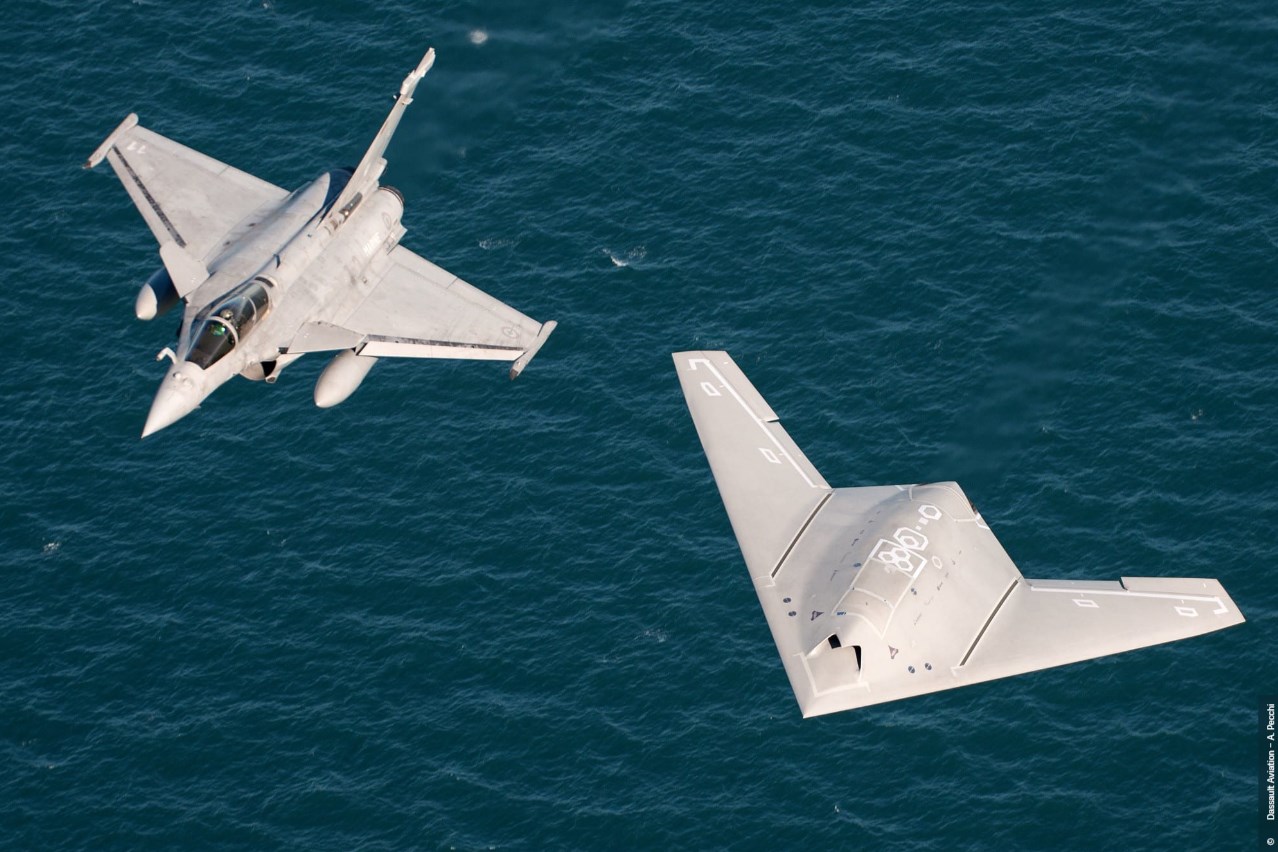France is moving away from the idea of developing a Rafale variant with dedicated suppression/destruction of enemy air defense (SEAD/DEAD) capabilities and has rather envisaged the nEUROn unmanned combat aerial vehicle (UCAV) carrying out the role. The drone will also act as a ‘loyal wingman’ to the under-development Rafale F5 version.
MiG-35s Join Ukraine War! Top Russian Official Says Bid To Revive Capable But Forgotten Successor To Legendary MiG-29s
Reports from France and discussions in its parliament have revealed its defense ministry’s vision to have specialized munitions and drones for the purpose, which will create the mass electronic effect in detecting and destroying enemy radars.
The Rafale F5 is being considered as a sensor, data fusion, and processing tactical flying command post. This is similar to the capabilities of the F-35, which has pioneering and nearly unparalleled sensor fusion technology, the role being considered for the US’s Next Generation Air Dominance (NGAD).
The developments come against the backdrop of the Russia-Ukraine war that has seen advanced electronic warfare (EW) and surface-to-air missilery becoming a major element.
Also, continuing friction between Paris and Berlin over the techno-industrial aspects of the French-German-Italian Future Combat Air System (FCAS) casting a shadow over the sixth-generation fighter has possibly driven France to continue investing in the Rafale.
‘France Does Not Need a Dedicated EW Fighter’
As per reports, the proliferation and advancement in Air Defense (AD) radar, missile technology, and introduction of long-range anti-access/area-denial (A2/AD) missiles and “high intensity” warfare had led to a debate about whether France needs dedicated EW fighter like the US Navy’s E/A-18G Growler.

This was especially true since the AS-37 MARTEL anti-radiation missile was withdrawn from service, and France’s Air and Space Force (AAE) “lost the ability to suppress and destroy enemy air defenses.”
Interestingly, a February 2023 report by the Royal United Services Institute (RUSI) noted shortfalls in the capability of North Atlantic Treaty Organization (NATO) air forces to conduct SEAD/DEAD missions and a shortage of munitions needed for the purpose.
“However, being able to thwart enemy air defense systems is essential to establish the credibility of the airborne component of nuclear deterrence. (But) for the Ministry of the Armed Forces, developing a Rafale dedicated to electronic warfare does not appear necessary to ensure the maintenance of (the) operational superiority” of the AAE.
Current Rafale’s SPECTRA EW System & F5
The development and evolution of the SPECTRA EW and jamming system for the Rafale has been pointed out to be consistent with this line of thinking. It allows the Rafale to have an “increasingly robust and adapted threat detection and jamming capacity to new threats.”
This was also the response recently given by the Ministry of the Armed Forces to a written question from France’s Member of Parliament Nathalie Da Conceicao Carvalho.
“SPECTRA is a fully internal electronic warfare system that leaves all the store points available for weapons, fuel tanks, or pods. (It) carries out reliable long-range detection, identification, and localization of threats, allowing the pilot to instantly select the most effective defensive measures based on combinations of radar jamming, infrared or radar decoying and evasive maneuvers,” Rafale’s website describes the system.
But SPECTRA alone does not address the “capacity deficit” in future SEAD capabilities, which “should be filled with the Rafale F5.” The jet’s development has now been mandated by a legislative act of the government, the Military Programming Law (LPM) 2024-30.
The Ministry of the Armed Forces’ response in the parliament explained that the “developments of the Rafale and its armaments will by 2030-35 (give) a credible capability to destroy enemy defenses…before…the operationalization of the SCAF (Future Combat Air System).”
This reflects France’s dwindling faith in the FCAS and indicates that even if the project survives and comes online by the given timeframe, France will still have parallelly gone its own way without banking on the collaborative effort.
The Rafale F5 will be a very different aircraft compared to the F3R and F4 and will have to be able to carry the future ASN4G nuclear-capable missile. But a defining feature seems to be able to process “huge volumes of data,” which will require fiber optic cabling that current versions “are not capable of supporting,” the report quoted General Stéphane Mille, the head of staff of the AAE.
nEUROn Wingman & Next Gen Anti-Ship, Cruise Missiles & EW Munitions
The LPM 2024-30 also provides for the Rafale F5 to be accompanied by a combat drone from the nEUROn program, led by Dassault Aviation, as part of European cooperation. The MAF’s response specifies that this combat drone “will allow it to act with discretion as an extension of the Rafale F5 to produce decisive network effects” and that, “with these characteristics,” this device “should be a cornerstone of processing modern medium and long-range anti-aircraft systems.”
Furthermore, certain munitions that the Rafale F5 can carry will be “capable of destroying air defense systems that are both powerful and mobile.” The MFA is therefore considering developing a “future anti-ship missile/future cruise missile (FMAN/FNC)…adapted to the destruction of ground-air systems.”
For EW, it suggests “on-board and dropped systems for saturation of the electromagnetic spectrum,” which “will make it possible to better take into account the needs to combat access denial and area interdiction devices.” Such means will complement “the air-ground armament of the future.”
SEAD/DEAD Not the Domain of Only the Air Force
France perceives that suppressing enemy air defenses in future warfare would rather be successfully achieved through joint force operations and not exclusively through the application of air power.
“(In any case in a) high-intensity conflict (where) the air environment will probably remain predominant in the application of these military effects…the suppression of opposing anti-aircraft defenses (must be) considered through a joint and multi-environment approach in order to be able to take advantage of a wide range of complementary capabilities.”
- The author can be reached at satamp@gmail.com
- Follow EurAsian Times on Google News